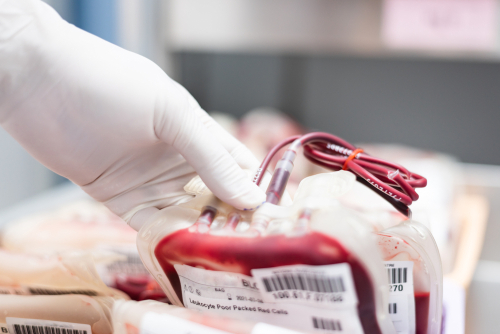
Defense Advanced Research Projects Agency (DARPA) officials are espousing the benefits of its Fieldable Solutions for Hemorrhage with bio-Artificial Resuscitation Products (FSHARP) program, which addresses blood supply shortages.
“When blood donations decline – as we have seen during the COVID pandemic – that threatens availability everywhere, even in high resource settings,” FSHARP Program Manager and Navy Medical Officer Cmdr. Jean-Paul Chretien said. “Blood availability also could be at risk in military engagements with large numbers of casualties, with a sudden and significant increase in need. The primary problem FSHARP aims to solve is whole blood’s dependence on cold chain and resupply.”
The FSHARP program seeks to develop a field-deployable, shelf-stable whole blood equivalent to aid in resuscitating trauma patients when donated blood products are not available.
DARPA selected the University of Maryland, Baltimore (UMB) to lead the research, with support from a group of universities and research entities, to integrate multiple bio-artificial and synthetic components to deliver oxygen, stop bleeding, and replace volume.
The research is also expected to evaluate efficacy and safety in complex and realistic trauma models while developing strategies for stabilizing the product for months without cold storage and scalable manufacturing methods.
“This is truly a ‘DARPA Hard’ problem and an example of DARPA’s ability to facilitate the partnerships needed to achieve technological breakthroughs,” Chretien said. “To address FSHARP’s goals requires multiple universities and companies developing analogues of various blood components, simultaneous evaluation of multiple efficacy and safety features and interactions among components in various model systems, industrial-scale manufacturing capabilities that can adapt the lab-scale methods, and analytics to integrate large volumes of experimental data and guide further optimization.”




